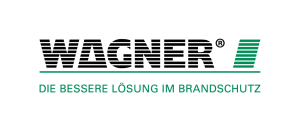Fire Alarm Technology: Technology Against False Alarms
When fires cause substantial property damage or even put lives in danger then this is usually a consequence of accepted risk, which is associated with the permanent applicable risk...





When fires cause substantial property damage or even put lives in danger then this is usually a consequence of accepted risk, which is associated with the permanent applicable risk and damage probability. For a business, the disruption, the inability to deliver, the non-sustainability to maintain turnover and the loss of customers resulting from a fire is a financial risk. This must be taken into consideration when planning fire protection concepts. Modern fire prevention technology allows for the determination of protection, almost without compromise, to an acceptable target level - even when the design process is subjected to very challenging environmental conditions.
In absence of alternatives, heat detectors are often installed in very dusty areas. The detailed fact, that these detectors must "wait" a significant and precious amount of time after a fire has started before it has reached the detectable size of conflagration is more than often disregarded. The typical fires and controlled test fires have shown that numerous specialists have underestimated the crucial advantages of very early fire detection.
While early detection in rapid test fires brings a few seconds advantage, in around two-thirds of normal fires this equates to numerous minutes or even hours which are gained. The early fire detection, bringing with it the time advantage, as a consequence, drastically reduces the scale of damage. The reduced scale of damage often transforms the incident from a potential and complete write-off down to minor situation with limited damages.
With early smoke detection - instead of tackling blazing flames - electrical faults are the statistical proven majority causes of fire - in this case fire can be prevented by removing an electrical fault, such as short-circuit. Instead of a massive amount of fire-quenching water, it will often suffice to turn off the power to an area of the building. This will remove the energy input which would maintain and boost a developing fire. The damage that is prevented every year by early detection and its countermeasures has not been quantified in any statistics.
Measures for the Prevention of False Alarms
Twenty years ago, a smoke detector was only considered "good" in expert circles when it was adjusted to such a de-sensitized state that it detected the standardized fire just within prescribed limits. This low sensitivity was the best-known method at the time to prevent false alarms and was only enhanced in combination with the application of heat detectors. Numerous technical measures - even when they were introduced individually into the market - have since ensured that smoke detectors have become significantly less prone to false alarms in spite of an enormous increase in sensitivity:
Technical Measures ‚TM' acc. VDE 0833-2:
- Dual detection dependence (Type A or B):
The fire alarm will only be activated when two automatic fire detectors which are paired have given an alarm signal. This measure is required for the control of automatic fire-extinguishing systems. It has limited effectiveness in regards to deception when the same principle of detection is used in two paired detectors.
- Fire type detection:
Smoke detectors cannot reliably distinguish whether the detected particles are smoke particles or if they are just of a disturbing size. By contrast, highly effective algorithms for fire type detection evaluate instead if the signal development of an event corresponds to the pattern of a fire situation and/or a non-fire situation.
- Multi-criteria evaluation:
By combining various fire detection criteria it is possible to achieve effective protection against false alarms. The effectiveness of these measures depends on the sensors and how they are used in combination with one another. When different technology detectors with different sensitivities are combined, the detection rate can be influenced in a less effective manner e.g. to the level of the most insensitive element.
New approaches to detection are being tested. These would be detectors that analyze aerosols by using different wavelengths and diffraction angles and in this way not only differentiate between disturbance alarm and fires but are additionally able to detect what particle size that can cause a disturbance and further identifies what material is burning.
Other Measures:
- Drift compensation:
The worthy progress made in general fire detection technology in regards to the prevention of false alarms can be assigned largely to the implementation of drift compensation. An alarm threshold is set within the range of normative prescribed limits and to ignore fluctuations within the measured base value (caused for example by dirt or background noise in the area of operation). The aim of this measure is to maintain constant detection quality so that the same volume of smoke is required to generate an alarm (absolute fire detection, see diagram 2). In contrast when comparing the detection quality of most older detectors without drift compensation the detection quality is inevitably subjected to the fluctuations of background noise.
- Signal-to-noise margin:
High-quality detectors in combination with complex algorithms make it possible to produce fire detectors with a narrow noise margin. These have a very low noise level relative to levels of the desired signal. Such fire detectors possess a high sensitivity and a low false alarm rate.
- Physical dust filtering:
In applications where high amounts of dust is prevalent, the most large dust particles are filtered out with use of air filters, while the smaller smoke particles pass through unhindered. This method is limited to the use of air-sampling smoke detectors.
- Accumulation effect:
Air-sampling smoke detectors make use of the fact that smoke gases are widely distributed throughout a room in the early stages of a fire. Each individual air inlet must at least meet the same requirements for fire detection as a conventional, single-point fire detector. The density of smoke in the detector increases with every additional opening through which the smoke is drawn in (see diagram 3). Different types of dust however possess a higher fall rate than smoke and only reach the air intakes that are in the direct vicinity of the point of their release.
Air-sampling Smoke Detectors: Economic Combination of Multiple Measures to Increase Protection Against False Alarms
The implementation of one or more of the above mentioned technical measures in a conventional single-point fire detector is very expensive as a high technological effort must be made for each and every detection point. Air-sampling smoke detectors provide an economic alternative in such situations as it is a central system with which many detection points can be covered.
Apart from the advantages of centralized equipment and the filtering of the air intake, air-sampling smoke detectors also provide further advantages for use in critical environmental conditions, such as:
- Immunity against electromagnetic and radioactive radiation. The sensors can be installed outside the area being monitored
- Removal of condensate to prevent faults and detector defects.
- Installation of the air-sampling smoke detector at an easily reachable location for maintenance without process interruption and/or without having to enter the detection or safety area.
most read

When the Internet stumbles: Why DNS is important
When DNS fails, the internet stumbles-AWS outage proves resilience and redundancy are vital for digital trust

Is Your Venue Ready for Martyn’s Law?
Martyn’s Law demands stronger security by 2027. Is your venue prepared to protect and respond?

Machine & plant safety: The winners of category A at the GIT SECURITY AWARD 2026
GIT SECURITY AWARD 2026: Machine & plant safety - an overview of the most innovative solutions

Assa Abloy's battery-powered Aperio KL100 secures lockers
Boost workplace security and operational flexibility by securing more than just doors.

GIT SECURITY AWARD 2026 - The winners have been announced!
GIT SECURITY AWARD 2026: The best safety and security solutions of the year - now an overview of all winners








